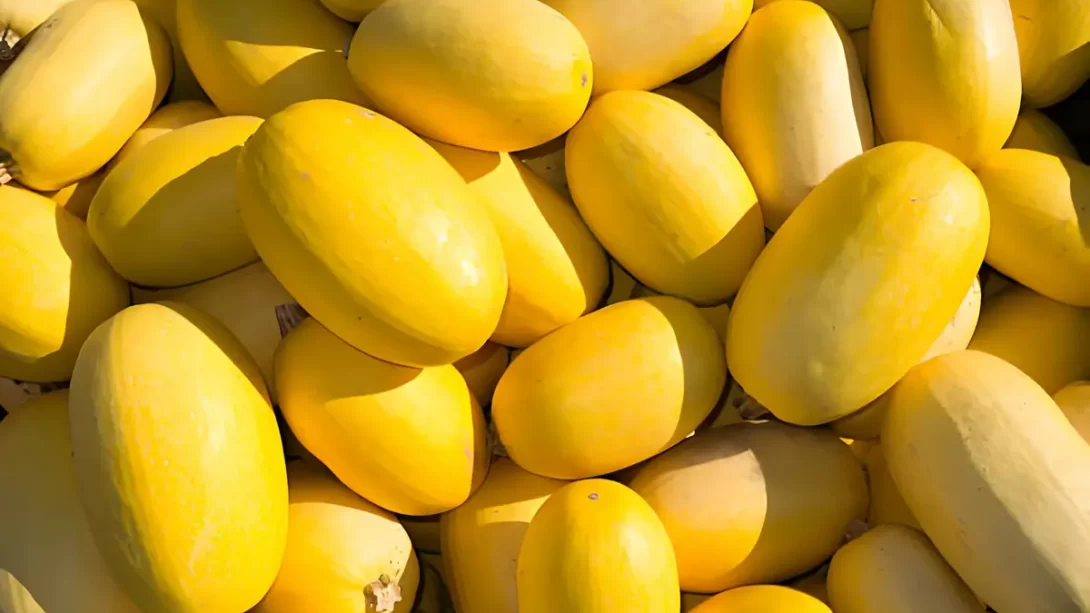Spaghetti squash, a popular variety of winter squash, is cherished for its unique texture and mild, slightly sweet flavor. When cooked, its flesh falls away in ribbons or strands resembling spaghetti, hence its name. This versatile squash is not only delicious but also a healthier alternative to traditional pasta, packed with nutrients like fiber, vitamins, and minerals. Knowing how to determine if spaghetti squash is fresh and safe to eat is essential for both taste and health.
Identifying Fresh Spaghetti Squash
The key to enjoying the best spaghetti squash starts with selecting a fresh one. Here’s what to look for:
- Appearance: A fresh spaghetti squash should have a bright, even color, typically yellow or orange. The skin should be matte and free from significant blemishes or cracks.
- Feel: It should feel heavy for its size, indicating a good water content and freshness. The exterior should be hard and firm; a soft squash may be past its prime.
- Smell: A fresh squash should have a mild, subtly sweet, and earthy smell. Any strong or off-odors suggest that the squash is no longer fresh.
Signs of a Bad Spaghetti Squash
Recognizing a bad spaghetti squash is crucial to avoid spoilage and potential food-borne illness. Here are some signs:
- Visual Signs: Look out for dark spots, mold, or an excessively dull, faded exterior. These are indicators that the squash is decaying.
- Texture Changes: If the squash feels soft, has a sunken surface, or the skin can be punctured easily, it’s a sign that it’s gone bad.
- Odor: A sour or unpleasant smell is a clear indicator of spoilage. If the squash smells off, it’s best to err on the side of caution and not consume it.
Storage and Shelf Life of Spaghetti Squash
Proper storage is key to maximizing the shelf life of your spaghetti squash. Here are some tips:
- Room Temperature Storage: A cool, dry place is ideal for storing uncut spaghetti squash. When stored properly, it can last for about one to two months.
- Refrigerator Storage: Once cut, wrap the squash in plastic wrap or store it in an airtight container. In the refrigerator, it can last for about a week.
- Freezer Storage: Cooked spaghetti squash freezes well. Store it in freezer-safe bags or containers, and it can last for several months.
Remember, the shelf life can vary based on the freshness of the squash at the time of purchase and the specific storage conditions.
Safety and Health Considerations
Eating bad spaghetti squash can lead to food-borne illness, so it’s important to be cautious. Here’s what you need to know:
- Risks of Spoiled Squash: Consuming spoiled squash can cause symptoms like nausea, vomiting, and diarrhea. If in doubt, it’s safer to discard the squash.
- Handling Partially Spoiled Squash: If only a small part of the squash shows signs of spoilage, such as a minor soft spot, you can cut it away. However, ensure that the rest of the squash shows no signs of decay.
- When to Discard: If there are significant signs of spoilage, such as widespread softness, mold, or an off-odor, the squash should be discarded to avoid health risks.
Conclusion
Identifying whether spaghetti squash is bad is crucial for ensuring both the quality of your dishes and your health. To recap, a fresh spaghetti squash should have a firm texture, a vibrant color, and a mild, earthy aroma. Be vigilant for signs of spoilage such as dark spots, soft patches, and unpleasant odors. Remember, when in doubt, it’s safer to discard the squash.
Proper storage extends the life of your spaghetti squash. Keep uncut squash in a cool, dry place and refrigerate or freeze it once cut or cooked. Always be cautious with partially spoiled squash; if the majority of the squash seems compromised, it’s best to throw it away to avoid the risk of food-borne illness.
By following these guidelines, you can enjoy the delightful taste and nutritional benefits of spaghetti squash safely. Regularly checking your stored squash and being aware of its shelf life will help you make the most of this versatile and healthy vegetable. Remember, the key to a great culinary experience with spaghetti squash lies in its freshness and your attention to these important details.



